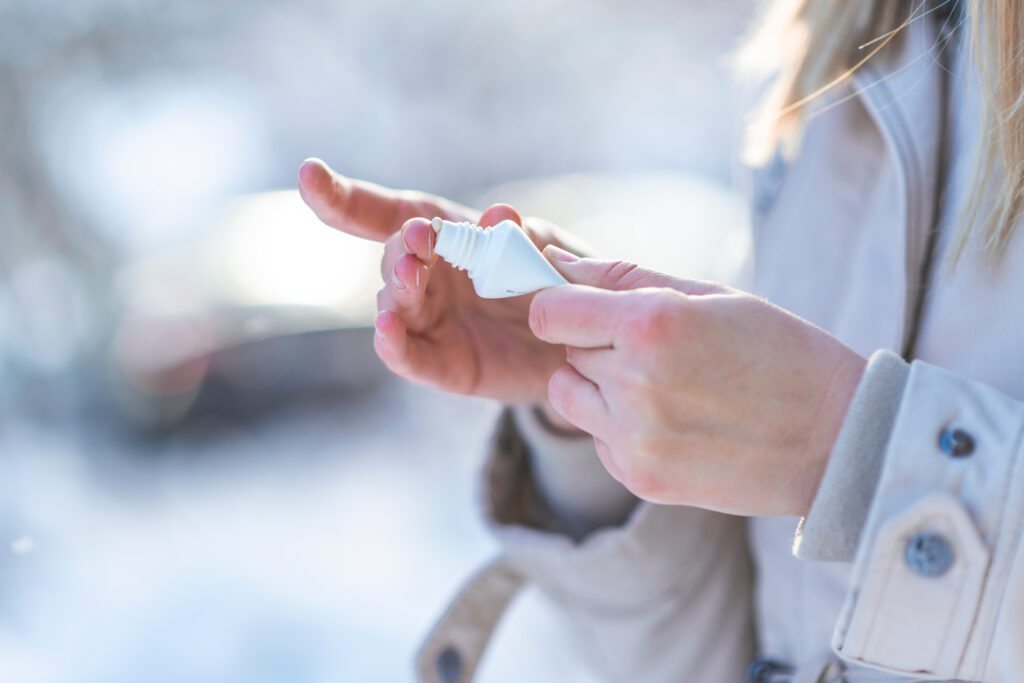There are all sorts of factors that can lead to an eczema flareup. Of all these factors, however, winter weather is perhaps the most impactful due to the dry cold air that it brings– the lack of moisture in the skin makes certain individuals more susceptible to eczema. Humidity provides the air with its moisture, but humidity levels can drop substantially when the weather is cold. Because there’s less moisture in the air, the skin doesn’t receive the hydration that it does at other points of the year. This lack of moisture can spur on an eczema flare, causing itchy and irritated skin.
Eczema preys on dry skin most frequently. Thus, the dry air brought on by winter creates an eczema-friendly environment, but those who have suffered from eczema long enough already know all this. Despite knowing this, for many, the question remains– how do you treat eczema in winter? Fortunately, with some professional guidance, there are several treatments that you can utilize.
Symptoms of Eczema
Before diving into the treatment options, you must identify whether your skin condition actually is eczema. The symptoms of eczema are many, and include but are not limited to:
- cracked skin
- dry skin
- skin rash
- skin itchiness
- thickened skin
- sensitive skin
Eczema can show up in a variety of ways and cause various symptoms. Along with the aforementioned symptoms, you may notice darkened, scaly skin around the eyes if eczema affects the face.
Tips for Relief
Now, how do you go about combatting eczema? There are several strategies you can carry out:
1. Run a Humidifier
The drop in humidity is the biggest reason that eczema flares up in the winter. For a quick home remedy, you can run a humidifier to help combat the problem. Put one in each room of your house, if possible.
2. Use a Thicker Moisturizing Cream or Ointment
You should also use a thicker moisturizing cream or ointment daily on your body and face. Lotion moisturizers are lighter and may feel more cosmetically pleasant, but they are not nearly as effective as their cream and ointment counterparts which trap in moisture much more effectively.
3. Remove Wet Clothing Quickly
When it makes contact with the skin, wet clothing can result in eczema flare-ups. Therefore, it’s important to remove wet clothing as quickly as possible and change into dry clothing.
4. Dress in Light Layers
While exposure to cold winter air can lead to eczema flares, you want to make sure you don’t overdress as well. If you wear too many clothing layers and overheat your skin, this can also lead to eczema flares. Thus, it is important to ideally wear several light clothing layers that can be easily removed to maintain an even skin temperature as best as possible.
5. Cover Your Hands
Your hands are ultra-susceptible to eczema in the winter, as cold air exposure often brings about dehydrated skin. Covering your hands with gloves or mittens can protect them from drying out and causing discomfort. Keeping your hands clean is important, but excessive washing can dry out your hands in the winter– make sure to apply moisturizing cream or ointment regularly to keep your hands from drying out.
Need Help Combatting Eczema?
If you’re dealing with eczema, you know firsthand how much these uncomfortable flare-ups can impact your daily life. Fortunately, you don’t have to battle this alone, and if you’re in the Arlington, VA area, we here at Arlington Dermatology have you covered.
Dr. Coyne and Dr. Livingood are experienced in the treatment of many different types of skin conditions, including but not limited to eczema. We offer a variety of treatments for a plethora of needs and unique cases. If at-home remedies at self-treatments have not aided your eczema symptoms, schedule a consultation with Arlington Dermatology, and we will work with you to find relief that lasts.



